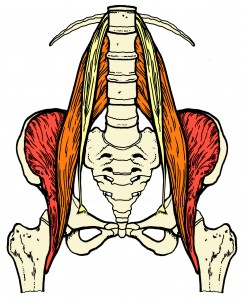 I think the psoas is an emotional muscle but what does that really mean?
I think the psoas is an emotional muscle but what does that really mean?
I teach that we hold our emotions in our psoas but can that be true? I don’t honestly know for sure, but… I don’t let anyone touch my psoas.
That’s my personal preference but I think it is a good approach for most.
Many years ago (before I became aware?) there was an acupuncturist who liked to needle my psoas and every time he did electric shocks would shoot out of my big toes.
One of the main phrases that I like to throw about concerning yoga is that the goal is to feel nothing.
If all goes well with our practice and our muscles there is no reason to be feeling them, they are working as designed and sensation doesn’t have to be part of the execution.
We feel muscles when they are unhappy and the feeling of an unhappy psoas often feels different than others.
It can be called the vomit muscle because that is often the feeling you get when you stretch a psoas that is not in the mood.
Not many muscles make you want to throw up when you call on them to work but the sense of nausea that often accompanies the stretching of a tight psoas is a very common reaction.
I also know of much more severe reactions that people have had, from extremely hot or cold extremities to fever, and even sleeplessness.
But not everyone is affected by having their psoas touched.
At a yoga therapy training I attended about fifteen years ago I worked with someone who asked, “Do you want to touch my psoas?”
How could I resist?
With a circle of people all around us she guided me to her psoas.
Then she asked me if I wanted to touch her spine, which I did, though it was kind of creepy.
So, as with everything, I leave it for you to decide.
Though I would think long and hard before letting someone touch your psoas.
